Recording, Mixing and Mastering
Published on 19/04/2023

In recent days we have been to visit Goffredo Gibellini, deus ex machina of Digital Records which is one of the most important realities in the world of Pro audio.
Digital Records was founded in 2003 with the idea of merging its experiences and skills in the field of soundtrack recording to provide innovative and high quality technical support to operators in the sector.
Digital Records is linked by very close relationships with the Prague and Budapest orchestras with which work methods have been developed aimed at the - continuous - improvement of productivity and product quality.
In line with customer requests, the Roma Film Orchestra was also set up. A flexible and modular ensemble that varies its composition according to the specific needs of the project.
The current location of the studios, active since 2012, was designed and built specifically for soundtracks recording.
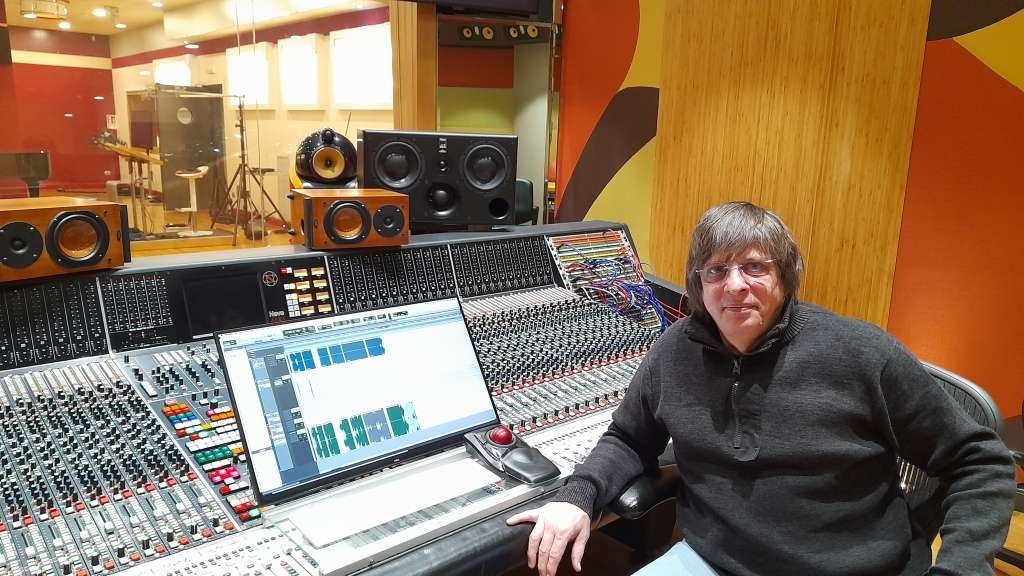
The chromatic and aesthetic choices of the studio are a tribute to the painter and musician Giacomo Balla, author, among other things, of the Manifesto del Colore and the Manifesto della Cinematografia Futurista.
This to underline the enthusiasm towards the search for a new language (detached from the tradition) that was at the basis of the realization of the studio.
Digital Records has created soundtracks for hundreds of films in recent years. The studio crew has worked for the major Italian publishers and with the most important film score authors and directors.
There is no shortage of experience in other areas such as, for example, advertising and pop music.
However, the list is so extensive that we refer you to an in-depth study on their website for all the relevant information.
During the meeting there was no mention of a method in the strict sense. However, Goffredo's approach is so broad and structured that the definition seems more than fitting.
All aspects that make the creation of the soundtrack a special experience are taken into consideration.
The comfort of the artists, the availability of the tools necessary for the job, the speed to reconfigure and provide solutions, the ability to solve problems and unexpected events and the most disparate technologies are the key points.
These are all meticulously managed to focus the energies of the working group towards the achievement of the objective.
Goffredo has often used the terms "friendship" and "family" to represent the strength of the bonds he tends to establish with all those who collaborate on the various projects.
This reveals a strong focus on managing relationships (which tend to be long) with the awareness that deeper knowledge leads to better understanding and the right level of emotional connection.
The latter is fundamental when it comes to art, especially when it comes to bringing music and images into harmony.
The method is also useful when the physical limits of the available structures have to be overcome.
With foreign orchestras, for example, it is possible to work remotely and there is no need to move groups of people and equipment.
If the dimensions of the hall are not large enough to have the acoustics needed… a method is invented to generate the reverberation that musicians and conductors expect.
Comfort of artists, we said. The right reverberation is essential to put players at ease and let them focus on the performance.
Even the colors and furnishing accessories have been designed to make the environment comfortable.
The ventilation system is designed with the same objective and it is possible, if necessary, to keep it turned on even during the recording sessions with no noise being heard.
ll the solutions adopted are in any case subject to analysis and continuous improvement.
Custom projects are often used and original solutions are found (such as, for example, using a modified electric toothbrush to make the console’s switches vibrate and free them from dust in a quick, effective and minimally invasive way).
Talking to Goffredo you can feel the dedication and passion and understand why Digital Records is so well known in the field in which it operates.
The fundamental concept that emerged in the interview (which was, in reality, a 360-degree chat full of anecdotes and interesting episodes) is that the orchestra is considered as a unicum.
This implies that primary attention is paid to the positioning of the panoramic microphones (all the best known techniques are used) which must adequately represent listening to an individual enjoying the performance.
Proximity microphones are still positioned close to the instruments but used very sparingly (or for particular effects).
This is because proximity to the sources changes (even considerably) the attacks, dynamics and reverb tails. The spatiality, the sensation of distance and the naturalness of the exposure are lost.
The orchestra ceases to be a unicum and becomes the sum of many different instruments and this is perceived by the listener.
Contrary to what I expected, we had found a colored outboard and some vintage components.
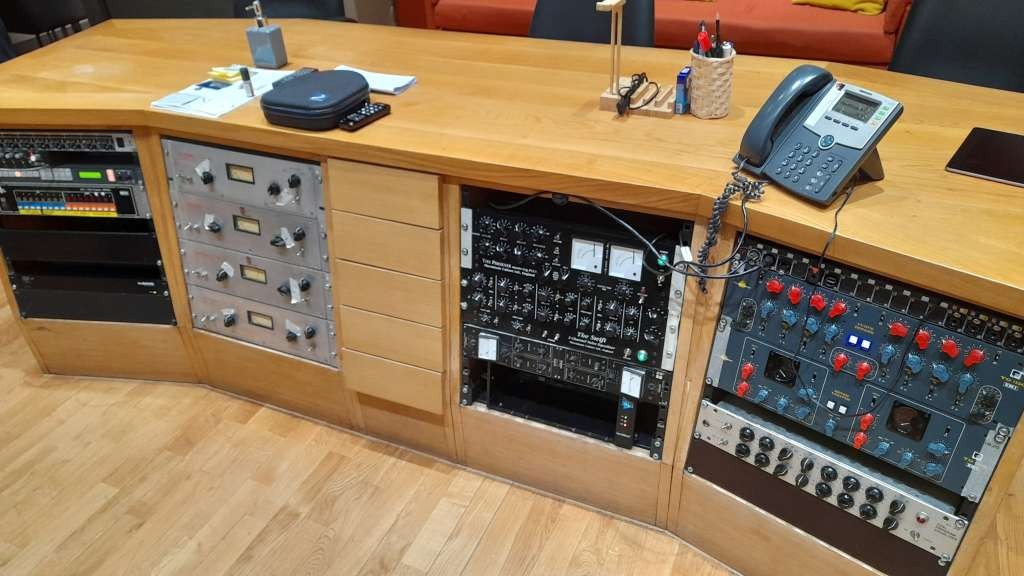
The reason being that it can happen, in soundtracks, that the recording has to be done by inserting particular warmth, harmonics or dynamics to arrive at the sound that is in the director's or composer's head.
To better understand how to proceed, Goffredo tends to participate in the works from the very first writings to understand how to best satisfy the requests and arrive at the right sound.
This is achieved with the right room, hardware and systems but also with the choice of musicians or conductors able to best support the specific project.
This is also a service provided by the house.
Regia A is a comfortable environment built according to high technological standards.
The key concept pursued in the creation of the spaces was the creation of an environment free of unpleasant resonances and perfectly tuned down to 50Hz.
Such an environment would be too dry and would not allow the musicians to perform with the sound they are used to. It would not guarantee the right comfort.
To solve the problem Goffredo invented (the system is patented and installed in the Live Room) a hall reverberation generation system based on very thin resonant membranes (custom made) that can vibrate up to about 2 KHz.
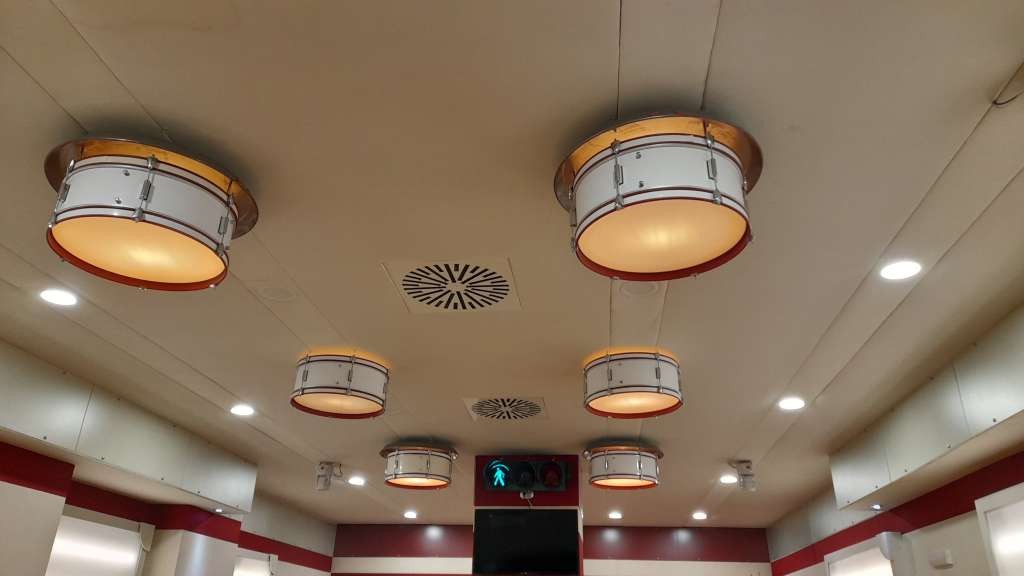
These are coupled with vibrating membranes installed on the walls (with variable color lighting) which are activated by specific actuators controlled by a signal collected via a series of microphones placed on the walls and suitably processed.
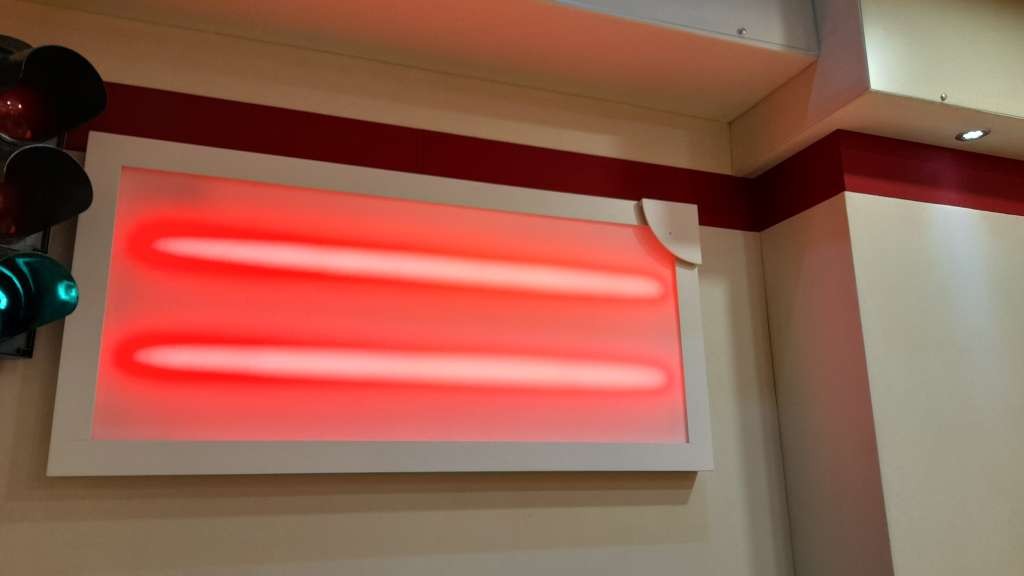
The mechanism also allows, if necessary, to vary the reverb tails in order to make their perception extremely natural.
A verification in the field made us perceive a much larger environment than that suggested by the dimensions of the recording room (which are in any case adequate to accommodate a very large staff).
We were talking about continuous improvement. The third release of the system is being studied and should also be able to vary the harmonic content of the reverberated signal, further increasing the perception of naturalness.
In the Control Room, the complete absence of direct reflections restores phase coherence in listening.
A large window on the Live Room facilitates and promotes communication and continuous feedback between the musicians and the artistic direction.
In the control room there is an AMS/NEVE 88-RS series. This is equipped with a total recall system and complemented by a huge producer desk, positioned in the center of the listening room.
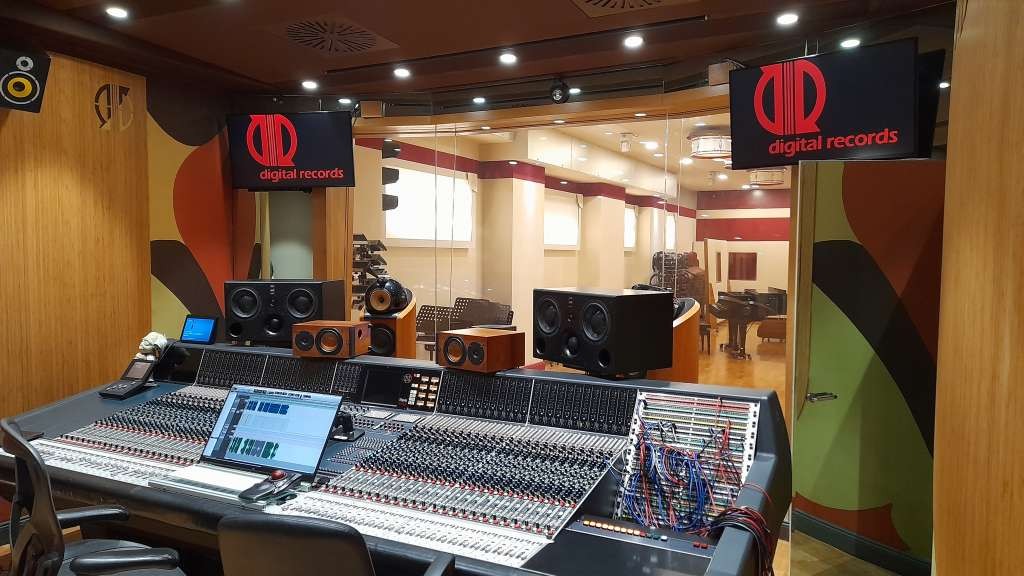
The oak flooring (not only an aesthetic choice), large and comfortable sofas and the air conditioning designed and built to avoid any background noise, contribute to the achievement of a very high degree of hospitality for working in full concentration and with attention paid exclusively to music.
As we said, to meet the logistical and budgetary needs of the productions, Digital Records offers the possibility of managing remote recording sessions, connecting from studio A with the Prague or Budapest orchestras (or, if necessary, with any other studio in the world).
Studiobox 1 is a multipurpose space adjacent to the Live Room recording area and connected to it via a large window. It was mainly meant as an environment dedicated to mixing and recording, exploiting all the shooting potential of the Regia A, with the exception of the desk.
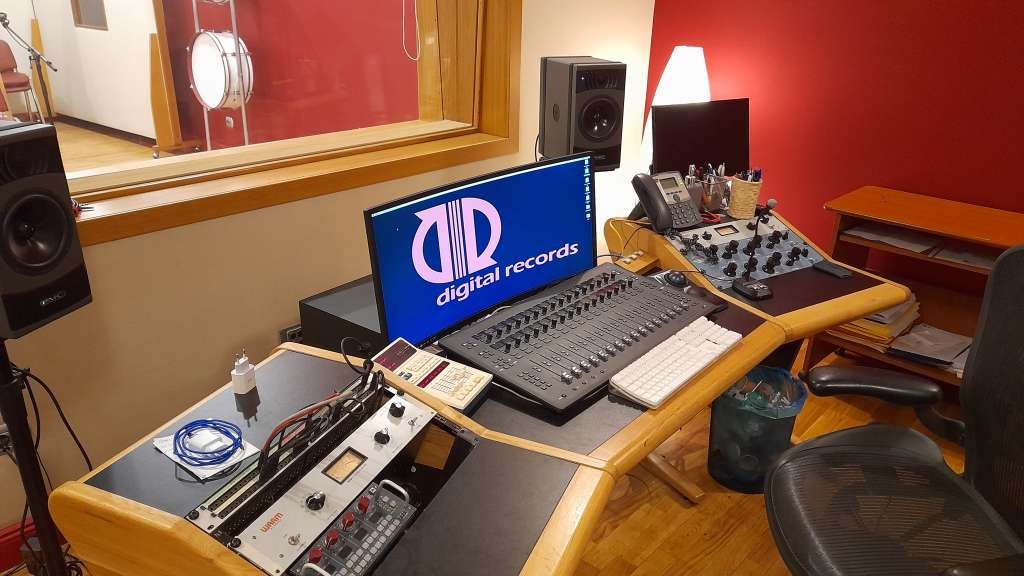
The Studiobox 2 completes Digital Records' range of music spaces.
It was mainly thought of as an environment dedicated to TV mixing, dubbing and editing, but if necessary it can become a recording and editing space for all the pre- and post-production phases.
The large 60″ monitor together with the webcam and symmetrical broadband make the Studiobox 2 the ideal space to comfortably manage remote sessions from external studios.
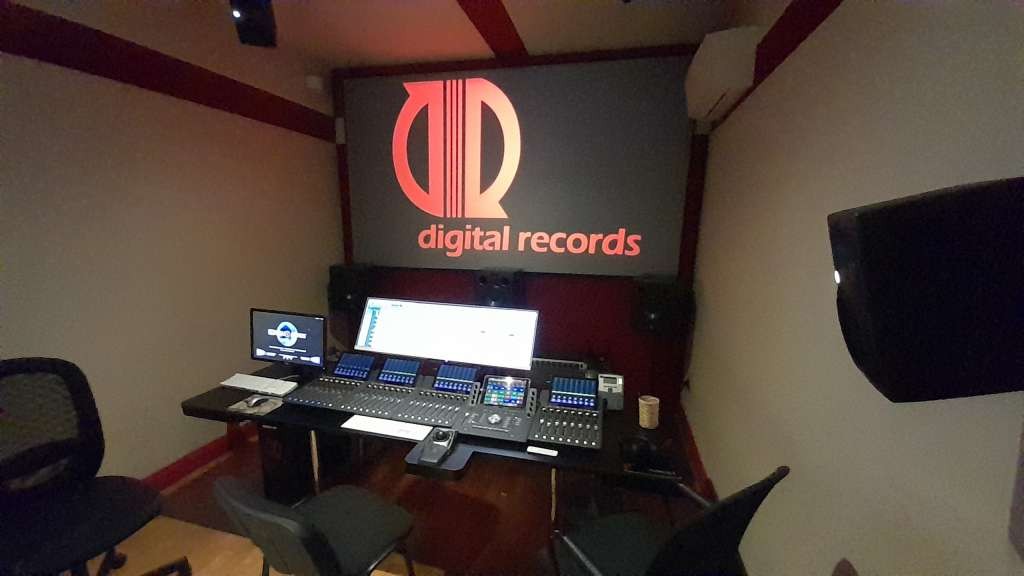
In the Studiobox 2 has been recently installed a Dolby Atmos set.
The Roma Film Orchestra is a modular body of musicians that is composed according to the musical projects and productions proposed to Digital Records.
Legacy of the famous "Unione Musicisti", it is designed and structured by the experience and artistic taste of Angelo Giovagnoli who follows the phases of creation and coordination.
One of the most valuable characteristics of the Roma Film Orchestra is flexibility.
This, being able to count on a registry of over 3500 musicians, is able to configure and model itself on precise musical directives, also bringing into play rare instruments external to the classical tradition.
Among the works made with the Roma Film Orchestra we find great successes such as La Grande Bellezza, To Rome With Love, Cesare Deve Morire.
The Budapest Symphony Orchestra of Hungarian Radio, also known by the acronym BpSO, was founded in 1943 on the initiative of Von Dohnányi's with the aim of broadcasting both to radio listeners and the audience concerts of high-level classical and pop live music.
Thanks to the vast repertoire and the particular training of its members, the orchestra can satisfy the most varied requests of composers and producers.
The soundtracks are filmed in studio No. 22 of the Hungarian radio, equipped with equipment of the highest technical level.
The Czech National Symphony Orchestra is an authentic musical and cultural heritage of the Old Continent.
The ensemble has collaborated, over the years, with internationally renowned musicians. These include Ennio Morricone, Andrea Bocelli, Luis Bacalov, George Michael, Sting, Kevin Costner, Rod Stewart, Lalo Schifrin, James Blunt and Marcus Miller.
The resident professional Digital Records team is composed by:
At the moment of the interview Tiziano Zerbinati was attending his professional internship at Digital Records.
Passion, attention to the result and desire to always improve make Digital Records great.
Watch the backstage of Freaks Out to get a practical idea of the way of working and the results that can be achieved.
We would like to thank Goffredo for his willingness to talk about the Studio and the huge experience available there. Big thanks also to all the others for their courtesy and hospitality.
Join us today and get 5% off your next order!

Empty cart